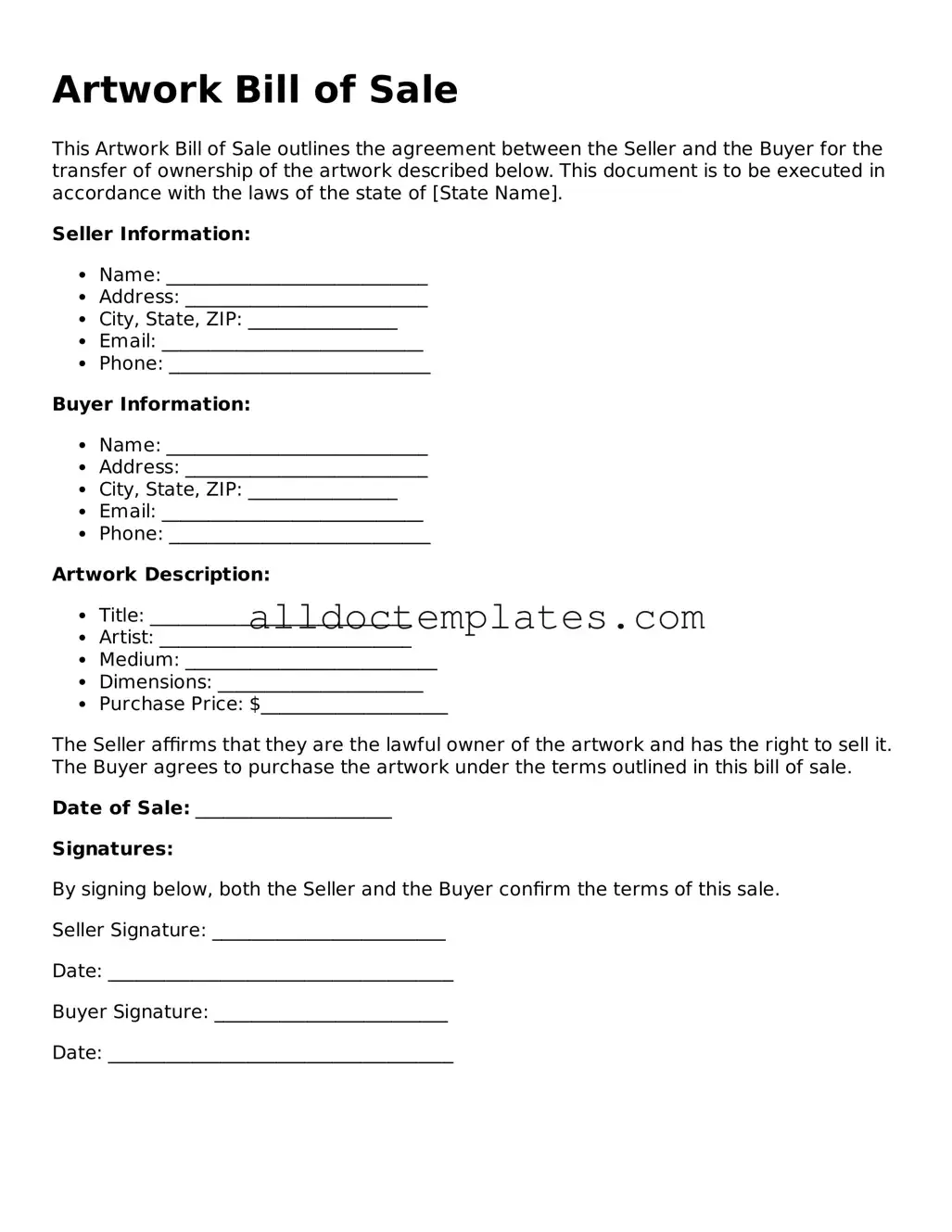Artwork Bill of Sale
This Artwork Bill of Sale outlines the agreement between the Seller and the Buyer for the transfer of ownership of the artwork described below. This document is to be executed in accordance with the laws of the state of [State Name].
Seller Information:
- Name: ____________________________
- Address: __________________________
- City, State, ZIP: ________________
- Email: ____________________________
- Phone: ____________________________
Buyer Information:
- Name: ____________________________
- Address: __________________________
- City, State, ZIP: ________________
- Email: ____________________________
- Phone: ____________________________
Artwork Description:
- Title: ____________________________
- Artist: ___________________________
- Medium: ___________________________
- Dimensions: ______________________
- Purchase Price: $____________________
The Seller affirms that they are the lawful owner of the artwork and has the right to sell it. The Buyer agrees to purchase the artwork under the terms outlined in this bill of sale.
Date of Sale: _____________________
Signatures:
By signing below, both the Seller and the Buyer confirm the terms of this sale.
Seller Signature: _________________________
Date: _____________________________________
Buyer Signature: _________________________
Date: _____________________________________
